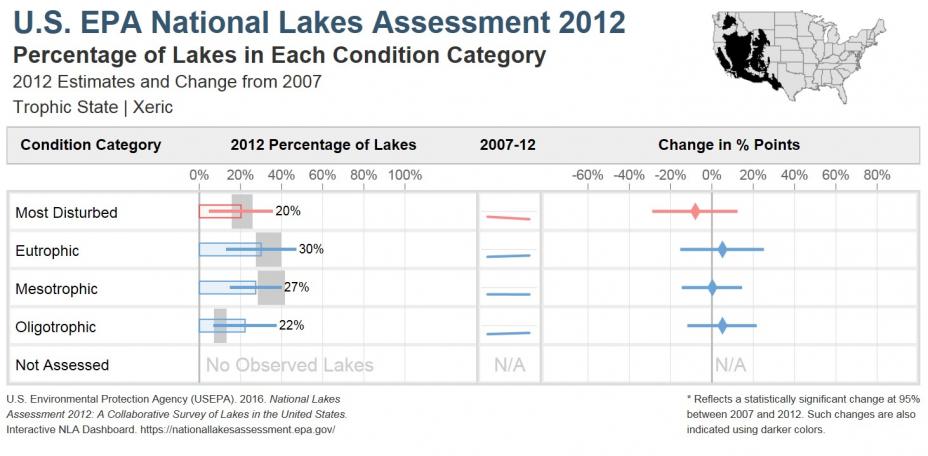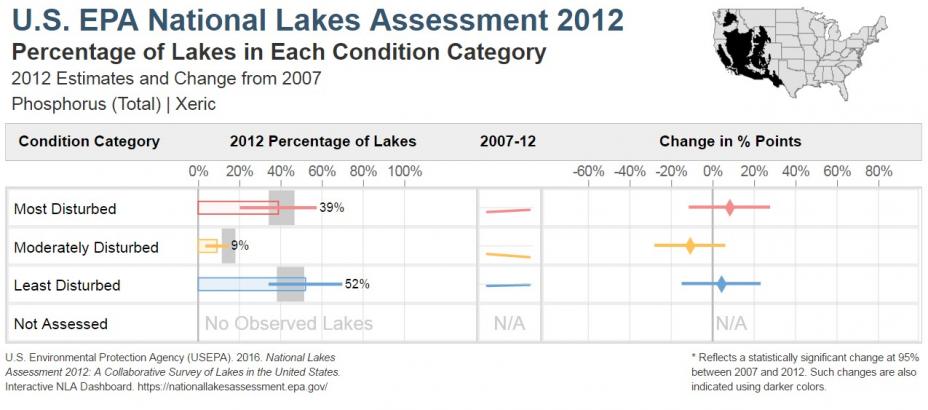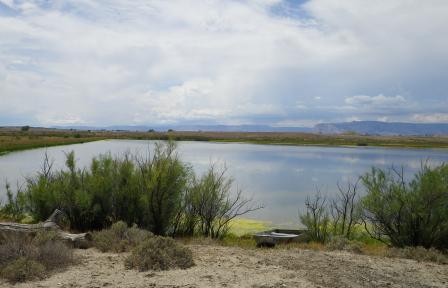Xeric Ecoregion - National Lakes Assessment 2012 Results
Key Results
A total of 2,180 lakes in the Xeric ecoregion are represented in the National Lakes Assessment (NLA). Of these lakes, about 11% are natural and 89% are man-made.
The NLA uses trophic state as an important indicator of lake condition and assesses the extent of key stressors in the nation’s lakes.
- In the Xeric ecoregion, 20% of lakes are rated as most disturbed based on trophic state, 30% are eutrophic, 27% are mesotrophic, and 22% are oligotrophic.
- The most widespread stressors assessed are phosphorus (39% of lakes), riparian vegetation cover (32%) and nitrogen (31%).
Trophic State

Indicator with the Highest Percentage of Lakes in the Most Disturbed Condition: Phosphorus

 Utah lake sampled during the NLA 2012. Photo: Ben Brown.
Utah lake sampled during the NLA 2012. Photo: Ben Brown.
Human Use Condition
Cyanobacteria is one of three algal toxin related indicators presented in the NLA (see also chlorophyll a and microcystins). It serves as a proxy for the presence of algal toxins.
- Based on cyanobacteria cell counts, 16% of lakes in the Xeric ecoregion are in the most disturbed condition (i.e., pose a high risk of exposure to algal toxins).
Change from 2007 (for lakes >4 hectares)*
- For the Xeric ecoregion, the NLA reports a 31% decrease in the proportion of lakes in most disturbed condition between 2007 and 2012 based on the condition of benthic macroinvertebrates.
- There was also a 17% decrease in the proportion of lakes in the most disturbed condition for both nitrogen and the lake drawdown exposure indicator.
To access more indicator graphics please visit the interactive NLA Dashboard.
* The change analysis is based on information from two points in time – 2007 and 2012. The change in condition analysis only considers lakes 4 hectares and larger because smaller lakes were not sampled in 2007.
